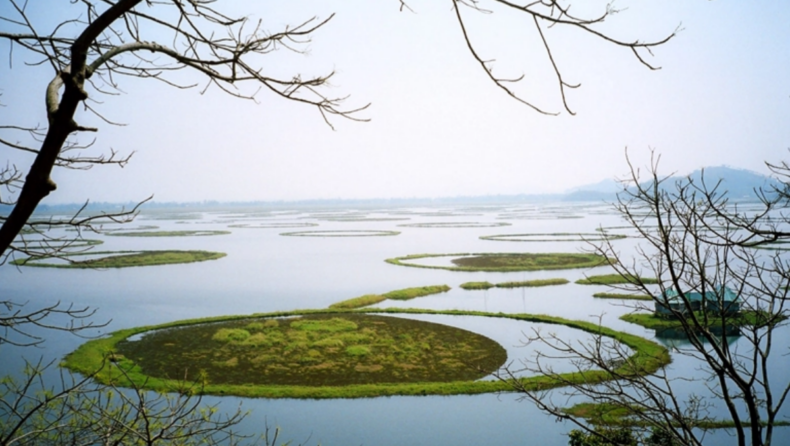With the five new wetlands bring India`s total to 54 Ramsar sites, the most of any nation in South Asia.
The five more Indian wetlands that have received Ramsar status as “wetlands of international importance” were announced by Union Environment Minister Bhupendra Yadav in a tweet on Tuesday.
The Ramsar Convention, an intergovernmental agreement created in 1971, provides a framework for both national and global action focused at safeguarding wetlands and their resources.
What are wetlands?
The definition of a wetland used by the Indian government does not include regions used for commercial activity, such as rice fields and river channels. Wetlands are defined as “areas of marsh, fen, peat land or water; natural or artificial; permanent or temporary; with water that is static or flowing; fresh, brackish or salt; including areas of marine water the depth of which at low tide does not exceed six meters; but does not include river channels, paddy fields, or human-made water bodies specifically.”
Wetlands in India
Wetlands make approximately 6.4% of the earth’s surface globally. According to the National Wetland Inventory and Assessment of the Indian Space Research Organization, wetlands make about 1,52,600 square kilometers (4.63 percent) of the nation’s total land area (ISRO). 43.4 percent of the 1,52,600 sq km of the interior area and 24.3 percent of the coastline area are made up of natural wetlands.
52,600 sq km are covered by rivers and streams, 24,800 sq km by reservoirs and barrages, 24,100 sq km by intertidal mudflats, 13,100 sq km by tanks, and 7,300 sq km by lakes and ponds.
Wetlands come in 19 different varieties in India. Gujarat has the highest percentage of wetlands of any state, with 34,700 sq km or 22.7 percent of all wetlands in the country, or 17.56 percent of the state’s total geographic area. The extensive coastline of the state is to blame for this. West Bengal (12,400 sq km), Uttar Pradesh, and Andhra Pradesh each have an area of 14,500 km2 (11,100 sq km).
Ramsar Sites in India
The five new wetlands include the Sakhya Sagar in Madhya Pradesh, the Pala Wetland in Mizoram, the Pallikaranai Marsh Reserve Forest, and the Pichavaram Mangrove in Tamil Nadu.
Ten of the 54 locations are in Uttar Pradesh, six are in Punjab, four each are in Gujarat, Tamil Nadu, Jammu and Kashmir, three each are in Himachal Pradesh and Kerala, two each are in Haryana, Maharashtra, Odisha, Madhya Pradesh, West Bengal, and Rajasthan, and one is in each of Andhra Pradesh, Assam, Bihar, Ladakh, Manipur, Tripura, and Uttarakhand.
Global leaders
According to the Ramsar List, Mexico (142) and the United Kingdom (175) have the most Ramsar Sites. Bolivia has the greatest area covered by the convention, at 1,48,000 sq km. Each of the following nations has assigned more than 100,000 square kilometers: Canada, Chad, Congo, and Russian Federation.
India`s importance in the Central Asian Flyway (CAF)
To escape the harsh winters in their breeding places, many bird species from Central Asia and Siberia migrate to milder tropical locations, including India and the equatorial regions. The CAF safeguards at least 279 populations of 182 migratory waterbird species in compliance with the Convention on the protection of Migratory Species of Wild Animals, including 29 species that are globally threatened or endangered and are only present during breeding, migration, and wintering (CMS). Throughout the winter, these migratory birds use the marshes of India as feeding and resting areas..
According to Shyamal Tikadar, principal chief conservator of forests (wildlife) and wildlife warden for Gujarat, the designation of a wetland as a wetland of global importance by the Ramsar secretariat may not result in any further money from the international organisation.
But from a managerial perspective, it’s comparable to accreditation. Similar to ISO certification, it If you don’t consistently satisfy their standards, they may also remove your name from the list. Even if it’s a plus, there is a price to pay, and that price can only be met if there is brand value.













